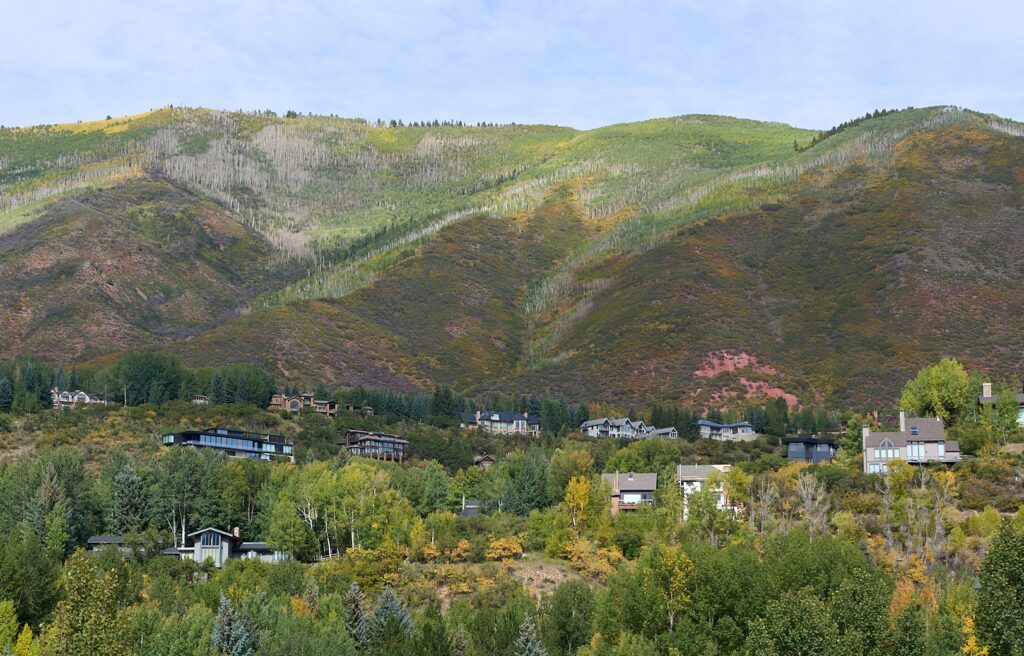Antler Velvet – Caught in the Act
ACES Staff
November 6, 2015

Male deer, elk, and moose have antlers, which they shed every spring, only to re-grow them again over the summer. ACES staff was lucky to catch a critical part of this annual cycle on our trail cameras recently at Hallam Lake.
Deer and elk typically shed their antlers around March and April, when the animals’ testosterone levels are at their lowest. The decreased amount of testosterone causes the bone connecting the antler to the skull to deteriorate, enabling the antler to fall off.
Once the previous year’s rack is shed, the new antlers grow exceptionally fast. An adult deer or elk can grow antlers in three to four months. In fact, deer and elk antlers are considered to be one of the fastest growing living tissues known! Antlers, just like plants, grow upwards, and from inside to out. Counting the growth rings of antlers, much like counting the growth rings of a tree, will give you a rough estimate regarding the age of the animal.
For anyone that has held an antler, it’s obvious to see that it is made of bone, not living tissue. This is where antler “velvet” comes in. The antler velvet of a deer or elk is a living tissue that provides blood to the developing cartilage of antlers. Once the cartilage is fully-grown, bone fills in and hardens, and the velvet peels or gets scraped off. Once the bone is stripped clean, it begins to weather and wear and will eventually look like a fully developed set of smooth antlers.
A small bachelor herd of mule deer frequently visit Hallam Lake’s 25 acres. A bachelor herd is a group of young or submissive males, sometimes related, sometimes not, that haven’t established dominance in their own herd. Until they establish dominance and start mating with their set of females, they will remain together as bachelors. Many scientists have wondered why these males, who spend their whole lives competing with each other, choose to tolerate each other during these periods. Wildlife biologists hypothesize that deer and elk evolved under heavy pressure from large predators (mainly wolves), and that establishing a herd, even with your biggest competitor, is safer than braving the wild world alone. Keep your enemies close! Having observed these deer both in person, and through the trail camera footage, I’m confident that these boys get along just fine, but there is definitely a hierarchy established between the three of them.
We have been trying to keep a close eye on this bachelor herd. We were exceptionally lucky recently, and captured one of our mule deer visitors rubbing the velvet off of his freshly developed antlers!
Here is a picture of the deer (identified by his distinct eyebrows) the morning he scrapes off his velvet, September 13th, at about 10:53AM.
 |
Here is a still shot from the associated video, midway through the process of removing his velvet. You can clearly see the fuzzy velvet hanging from the points of his rack. This screenshot was taken September 13th, at about 7:44PM.
 |
Finally, in this photo you can see most of the velvet has been scraped off! Eyewitnesses who saw this animal shortly after these pictures were taken can attest that the antlers were virtually velvet-free, but still had a bright red tint to them, presumably left by the residual blood from the velvet. This picture was taken on September 14th, at about 7:23AM.
 |
We were thrilled to capture this process on film, something most of us will never come close to witnessing in person. Check out the time-lapse footage here. ACES at Hallam Lake is a gathering place, and we’re thrilled to host visitors like this herd of beautiful, and fascinating animals.
~ Matt Thomas, ACES Educator
Related Content

RFV Phenology: Green is out, yellow is in! Or is it?
Learn More
ACES // City of Aspen Open Space Birding: Marolt Open Space 9/5/2024
Learn More